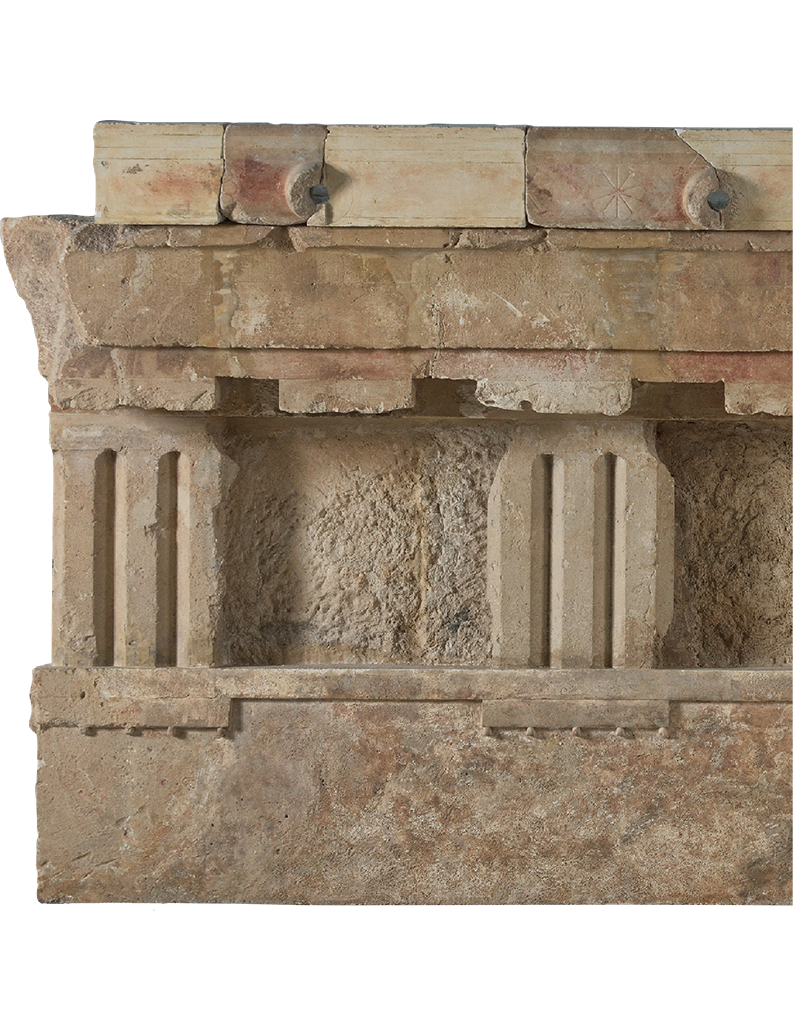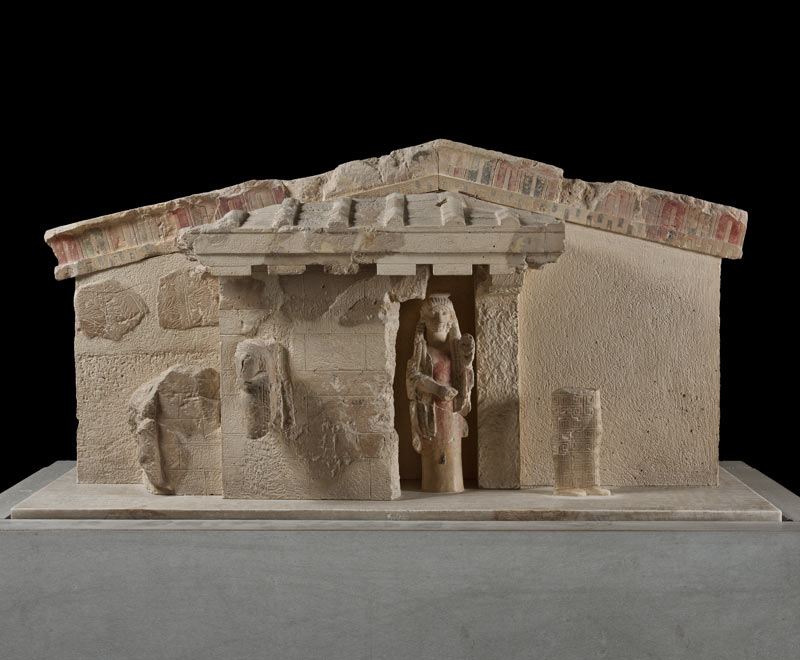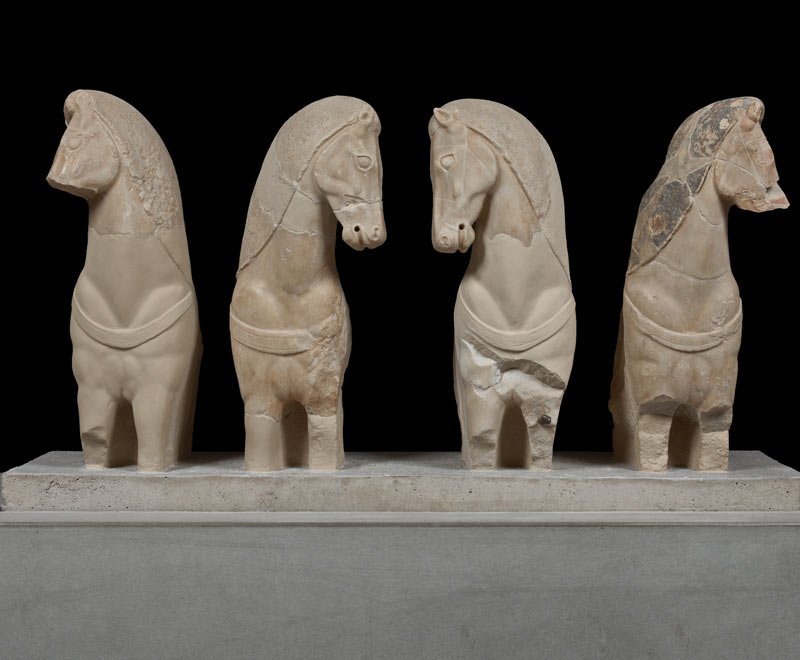THEMATIC SECTION
The buildings
The first monumental temple on the Acropolis was founded in the place of the small brick-walled temple of Athena Parthenos. Referred to by archaeologists as the "Archaic Parthenon", it was probably the “Hekatompedon” mentioned in ancient historical sources. While an exact foundation date remains unknown, many have linked its construction to the establishment of the Greater Panathenaia festival in 566/5 BC. Although the Hekatompedon’s foundations have disappeared, its existence is attested by the large sculptures and architectural members discovered near the Classical-era Parthenon, which one can see today when entering the gallery.
A series of smaller structures from about the same time, presumably treasuries for the safeguarding of valuable dedications, have left no architectural trace on the Acropolis’ summit. However, four colourful pediments from these buildings have been preserved and today are displayed in the Museum.
In the last quarter of the 6th century BC, a large temple, which the ancients called the “Archaios Neos” (Old Temple), replaced the small brick-walled temple of Athena Polias. Today, its foundations are preserved next to the Erechtheion, a temple constructed about a century later. The "Old Temple" housed the venerable wooden cult statue (xoanon) of the city’s patroness Athena and the cult of other gods and heroes. This was the final destination for the Panathenaic festival’s procession, which culminated with the presentation of a newly woven peplos for the statue of Athena. Only a few elements are preserved from the building and its imposing decoration – most notably marble sculptures that once adorned one of its two pediments.










